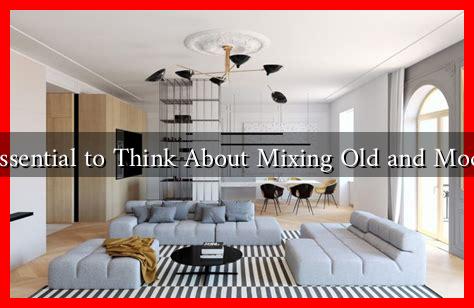-
Table of Contents
Why Is It Essential to Think About Mixing Old and Modern Styles?
In an ever-evolving world, the fusion of old and modern styles has become a significant trend across various fields, including architecture, fashion, interior design, and even technology. This blending of styles not only creates visually appealing aesthetics but also fosters a deeper appreciation for history and culture. In this article, we will explore the importance of mixing old and modern styles, the benefits it brings, and how it can lead to innovative solutions and unique expressions.
The Aesthetic Appeal of Blending Styles
One of the most compelling reasons to consider mixing old and modern styles is the aesthetic appeal it creates. The juxtaposition of traditional elements with contemporary designs can result in stunning visuals that capture attention and evoke emotion. Here are some key points to consider:
- Contrast and Harmony: Combining different styles can create a dynamic contrast that enhances the overall design. For instance, a sleek modern sofa paired with a vintage coffee table can create a harmonious yet striking living space.
- Timelessness: Old styles often carry a sense of timelessness that modern designs may lack. By incorporating vintage elements, one can achieve a look that feels both current and enduring.
- Personal Expression: Mixing styles allows individuals to express their unique tastes and personalities. It provides an opportunity to showcase personal history and preferences through design choices.
Historical Significance and Cultural Appreciation
Incorporating old styles into modern designs is not just about aesthetics; it also serves as a bridge connecting generations. Understanding and appreciating historical styles can enrich our cultural narratives. Here’s how:
- Preservation of Heritage: By mixing old and modern styles, we help preserve cultural heritage. For example, the revival of Art Deco elements in contemporary architecture pays homage to a significant design movement while making it relevant today.
- Storytelling: Each design element has a story. By integrating vintage pieces, we can tell a narrative that reflects our history and experiences, fostering a deeper connection to our surroundings.
- Inspiration for Innovation: Old styles can inspire modern innovations. Designers often look to the past for ideas that can be reinterpreted in new ways, leading to groundbreaking designs.
Practical Benefits of Mixing Styles
Beyond aesthetics and cultural significance, there are practical benefits to mixing old and modern styles. These include:
- Cost-Effectiveness: Vintage items are often more affordable than brand-new modern pieces. By incorporating second-hand or antique items, one can create a stylish space without breaking the bank.
- Sustainability: Mixing old and modern styles promotes sustainability by encouraging the reuse of materials and reducing waste. This approach aligns with the growing trend of eco-conscious living.
- Unique Solutions: The combination of styles can lead to innovative solutions in design. For instance, using reclaimed wood from old buildings in modern construction not only adds character but also reduces the need for new materials.
Case Studies: Successful Blends of Old and Modern Styles
Several successful projects exemplify the effective blending of old and modern styles:
- The High Line, New York City: This elevated park transformed an old railway line into a modern green space, showcasing how historical infrastructure can be repurposed for contemporary use.
- Apple Park, Cupertino: The design of Apple’s headquarters incorporates elements of nature and traditional architecture, creating a modern workspace that respects its surroundings.
- Restoration of Historic Buildings: Many cities are revitalizing historic districts by blending modern businesses with preserved architecture, creating vibrant communities that honor their past.
Conclusion: Embracing the Best of Both Worlds
In conclusion, thinking about mixing old and modern styles is essential for various reasons, including aesthetic appeal, cultural appreciation, and practical benefits. This approach not only enhances our environments but also fosters innovation and sustainability. As we continue to navigate a rapidly changing world, embracing the best of both worlds will allow us to create spaces and designs that are not only beautiful but also meaningful. By valuing our history while looking forward to the future, we can cultivate a richer, more diverse cultural landscape.
For more insights on design trends and the importance of blending styles, visit Architectural Digest.

